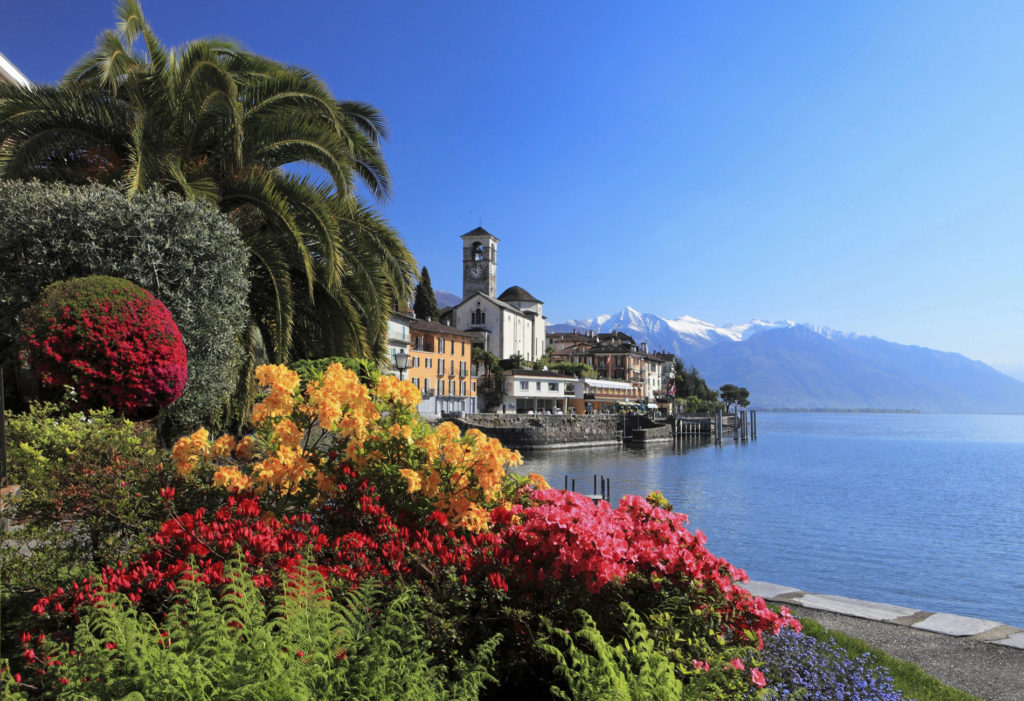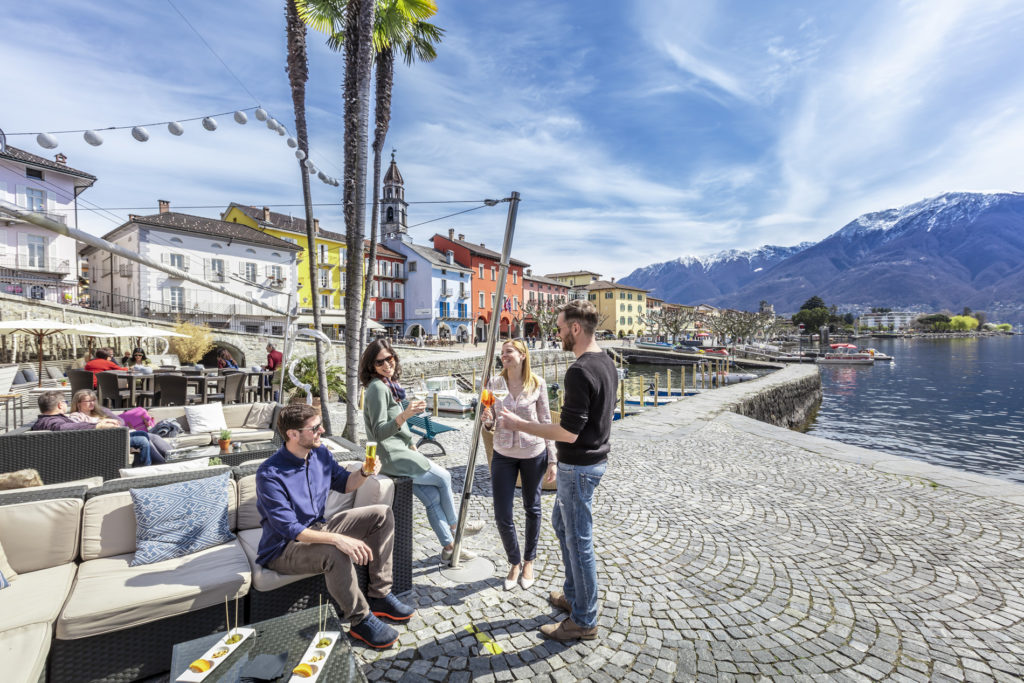This other Switzerland is not yet Italy. And yet, the shores of Lake Maggiore invite you to relax and enjoy gourmet, cultural and sporting pleasures that have nothing to envy the neighboring peninsula. Bonus: an 18-fairway golf course and a renowned jazz festival.
Text: Bernard Pichon
At the crack of dawn, the day begins with breakfast in one of the many cafés in the center. Croissants, cappuccino and the inevitable Corriere del Ticino.
The paper devotes an article to all the celebrities who have spent time in these latitudes! One wonders what attracted Casanova, Kandinsky, Hermann Hesse and Konrad Adenauer to this Ticinese Eden. The answer can often be found in their writings: some speak of serenity, of landscape; others of climate or atmosphere, even of magic.
There’s no substitute for personal experience, so let’s explore Ascona’s historic maze. Most of its narrow streets are still lined with medieval or Renaissance buildings. Stores and art galleries have taken refuge here. You’ll have to contain your shopping fever until the shops open, or until the borgo, the weekly market for local crafts and produce.



Reference
And here are the stairs leading up to Monte Verità. The climb offers a spectacular view of the area below (you can also take a bus from the Autosilo stop, which takes just 8 minutes).
The hill is renowned for its historical and cultural heritage. In addition to being the playground of a naturist colony during the Roaring Twenties, it also attracted a number of revolutionaries, philosophers, writers and artists.
Surprise: the park is home to Europe’s most northerly tea plantation, a Japanese environment where you can buy and taste delicious infusions. To extend this Japanese fantasy, why not take the 15-minute boat ride from the Ascona landing stage to the nearby Brissago Islands?
The largest of these – Saint Pancras – is home to a superb listed botanical garden. The park is divided into several sections, one of which – Far Eastern – is rich in azaleas, rhododendrons, Japanese palms, camellias, banana trees and ginkgo. Above all, it boasts an impressive bamboo grove. You can, of course, take a boat trip around Lake Maggiore, but it can take a long time.



Good mouth
It’s not China, Thailand or Vietnam. And yet, the 87 hectares of a 130-hectare estate in the Maggia river delta, straddling the municipalities of Ascona and Locarno, are indeed rice fields. Nothing to do, however, with the vast surfaces of the main Asian producers, flooded several times a year. Here, the sandy soil is irrigated generously every 3-4 days, but only produces an annual crop, which the grotti love.
Originally, the grotto was a space – often a small cave, hence the name – dedicated to preserving food. That’s why these inns are usually located in remote, shady spots, guaranteeing a little coolness in summer. Over the years, new preservation methods have made these establishments forget their original vocation. Now very popular with tourists, they remain faithful to local produce. It seems a long time ago that the majority of Ticino’s inhabitants were reduced to a diet virtually limited to chestnuts, potatoes and polenta. Over time – and also thanks to emigrants bringing new culinary habits back home – local cuisine has become more diversified and refined.
Today, menus feature recipes handed down from generation to generation, as well as revisited specialties. Minestrone, pumpkin soup, tripe, roast meats (rabbit, kid) in sauce or civet are among the best-known and most popular dishes of Ticino cuisine. Of course, risotto and polenta are always on the menu. For dessert: doughnuts, bread cake and amaretti, not forgetting ratafia (also known as nocino), a walnut-based liqueur for which it is said that only the Bernard Pichon monks hold the original recipe.

